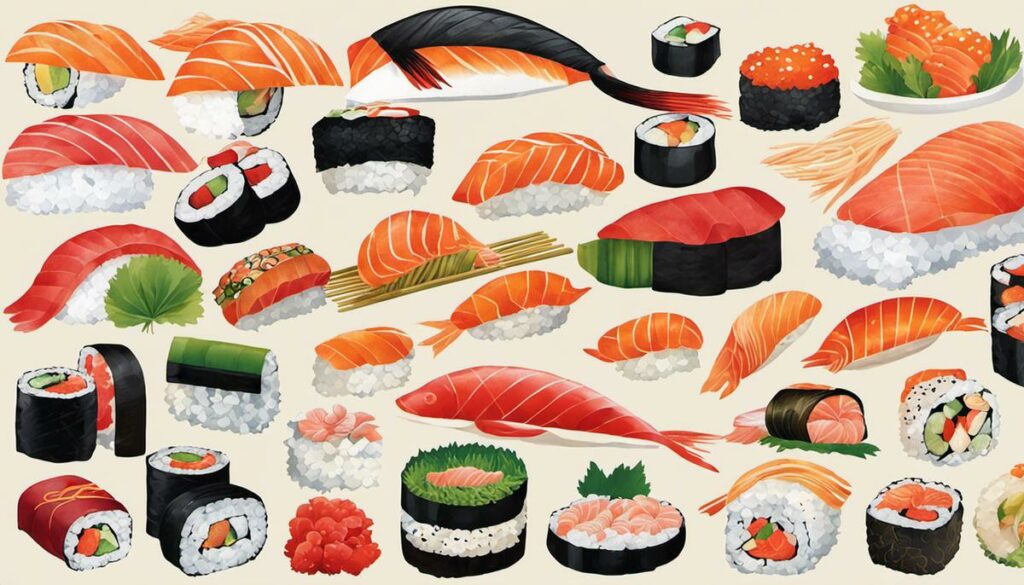In the complex and fascinating world of Japanese culture, sushi plays a central and indispensable role. Expertly prepared and packed with meaning, these bites are far more than just a meal — they’re a reflection of Japanese history, aesthetics, etiquette, and health awareness. An examination of the history of sushi takes us on a journey through the origins and evolution of this gem of Japanese cuisine, while at the same time revealing how deeply rooted it is at the heart of Japanese culture.
The History of Sushi
Title: Sushi’s Roots in Japanese Culture: A Stylish Journey Through Time.
Sushi, a culinary and cultural gem that originated in the Land of the Rising Sun, has established itself as an integral part of Japanese culture over the centuries. The history of sushi is truly a fascinating mosaic of developments and transformations.
Once a method of preserving fish fermented in rice, sushi began its journey in the Yayoi period (300 BC – 300 AD). The fermentation process developed an incredibly rich flavor that has remained a part of sushi cuisine to this day.
With the modernization of Japan in the 19th century, in the age of the Edo, a new innovation influenced: “Nigiri Sushi”. This form, in which a piece of raw fish is placed on a small portion of rice, placed sushi in the rank of gastronomy and enabled it to achieve nationwide appeal and recognition.
Sushi continued to establish itself as a type of fast food, sold and enjoyed in stalls along the thriving streets of Tokyo. In doing so, it demonstrated its adaptability to adapt both its taste and its performance to the new social and urban dynamics.
Over time, sushi exuded a certain expression of minimalism and elegance that can be reflected in the Zen philosophy . There is an aesthetically pleasing connection between the compact, harmonious proportions of the sushi rolls and the masterful precision with which the ingredients are arranged.
Today, sushi is more than just a meal. It is a complete sensory experience, an expression of craftsmanship, and at the same time a reflection of the deep-seated values and traditions of Japanese culture. While sushi is gaining popularity worldwide, its deep relationship with Japan remains unchanged.
Sushi, a timeless essence of foodie culture, has established itself in Japanese history with style and character. It reminds us that even in the simplicity of everyday life, art and aesthetics can be found.
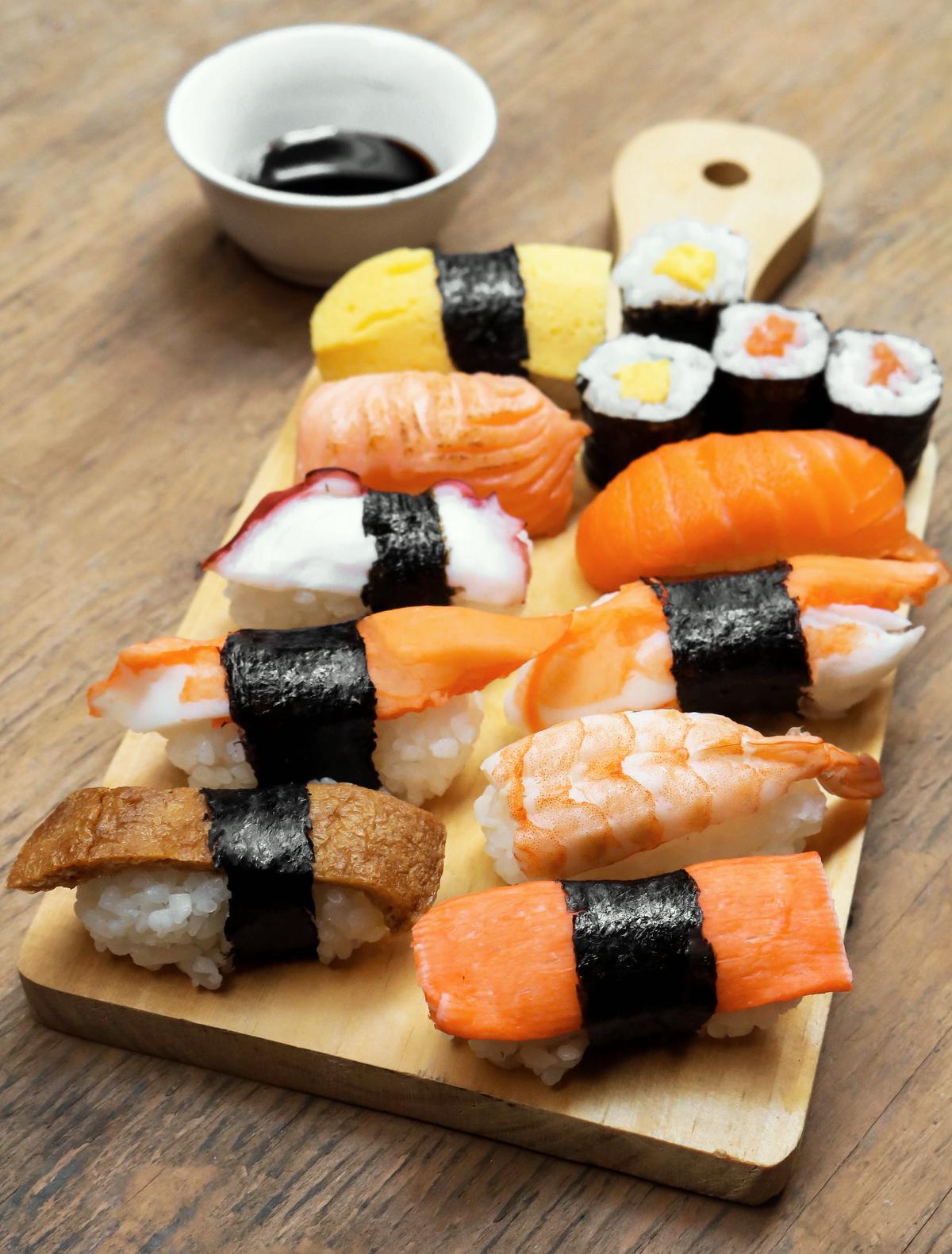
Photo by fadsphoto23_ on Unsplash
Sushi etiquette
Japanese Sushi Etiquette: Key Elements Accentuate the Magic of the Dining Experience
Strong traditions and cultural nuances are the basic building blocks that shape Japanese sushi etiquette. We increasingly understand that eating sushi is an artistic performance that goes beyond the simplistic representation of eating in pieces, emphasized by the influence of the Ogasawara school of etiquette, which sets the protocol for such occasions in Japanese culture.
First of all, let’s aim for the art of ordering sushi, because that is the first step to enjoying this exquisite dish. The order will usually rely on the chef’s recommended omakase (わたしにおまかせ), which literally means “I’m counting on you.” This opens the doors to a stunning tasting experience, guided by the expertise and creativity of the sushi chef.
As soon as the plate is in front of you, it’s all about the right technique. Be sure to dip each piece of sushi in soy sauce with your fingers or chopsticks, usually soaking only the fish side and not the rice in the sauce. Etiquette requires you to consume your sushi in one bite – a rule that preserves the integrity of the flavor and the harmonious balance between all the components of the sushi.
Above all, pay attention to the palate cleanser, the pickled ginger consumed between sushi servings. Not only does it highlight subtle differences in taste, but it’s also an appreciation for the rhythmic flow of food, an important aspect of the Japanese dining experience.
With these tips and tricks at hand, you are well equipped for an inviting encounter with Japanese sushi etiquette. So much more than just a culinary delight, sushi is a sensual experience, a dialogue between guest and chef, seasoned with respect, passion and tradition. It is an era that represents the cultural memory of Japanese cuisine while celebrating the achievements of human ingenuity and creativity.
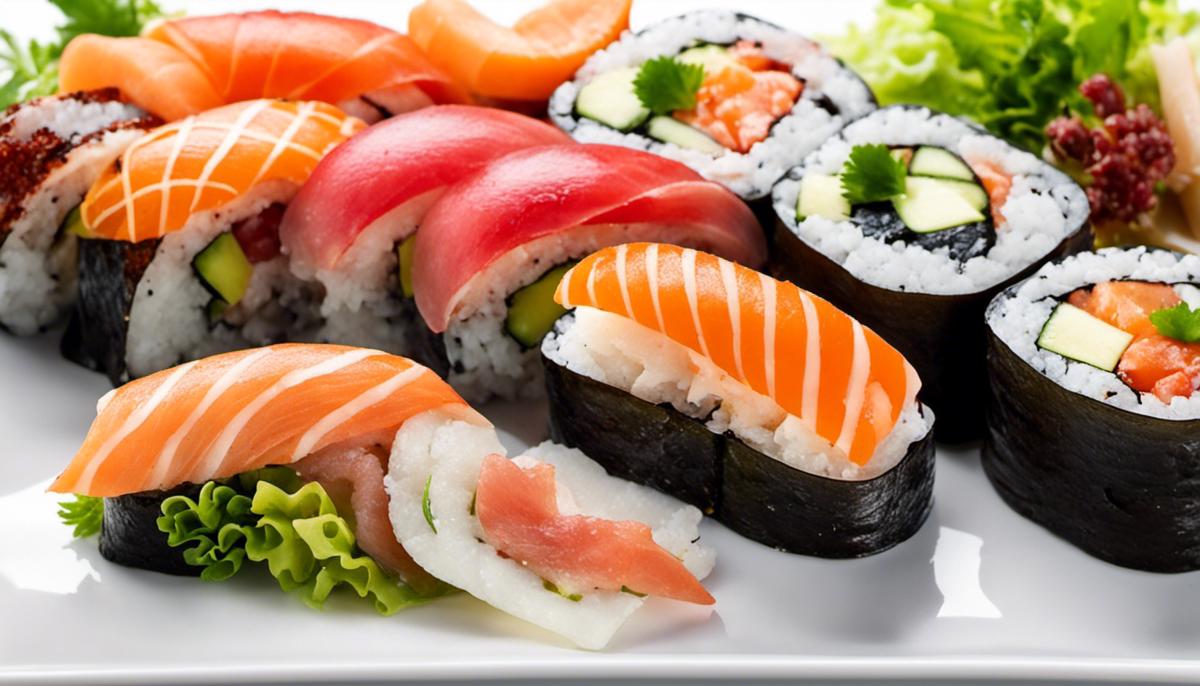
Sushi as an art form
Sushi is much more than just raw fish on rice.
It is a representation of Japan’s deep history, traditions and cultural nuances. One of these aspects is the importance of the Ogasawara School of Etiquette. This tradition not only emphasizes how to behave correctly in a social environment, but also covers the fine art of ordering sushi.
Something that may seem simple at first, like ordering sushi, actually becomes a carefully choreographed encounter between waiter, chef, and guest. Choosing the right variety, the way you dip the sushi pieces into the soy sauce, and even the order in which you eat the different varieties are all aspects of Ogasawara etiquette.
When we talk about sushi, it is also necessary to mention the importance of proper technique when eating . The traditional method is to eat the piece of sushi in one bite. This ensures that the connoisseur experiences all the flavours at once and can fully appreciate the finely tuned textures. Ogasawara etiquette also dictates that sushi should be eaten with the fingers, a tradition that has been lost in our modern, often utensil-related world.
Another pleasing nuance is the use of soy sauce. However, it should be noted that each piece of sushi is already optimally seasoned. The excessive dipping in soy sauce can therefore be seen as a lack of respect to the sushi chef who has spent a lot of time and effort perfecting the taste of the sushi.
When we talk about respect, passion and tradition in sushi etiquette, we can’t forget about the palate cleanser, the pickled ginger. It is consumed between pieces of sushi to neutralize the taste buds and maximize the enjoyment of the different varieties.
The dialogue between guest and chef is another essential aspect of the sushi experience. Chefs often take the time to serve their guests in person – this is an exquisite way to learn more about the fine art of sushi and appreciate the chef’s passion for his work.
To experience the aura of sushi, it is essential to recognize the power of the sensory experience. Individual ingredients such as the mildly salty rice, the smooth, sweet meat and the fresh wasabi, all these elements combine to create a symphonic taste experience.
In conclusion, sushi is the cultural memory of Japanese cuisine. It is an expression of Japan’s artistic value and its ongoing commitment to preserving and developing traditions. Thus, sushi is not only a feast for the taste buds, but also a living window into the rich and diverse culture of Japan.
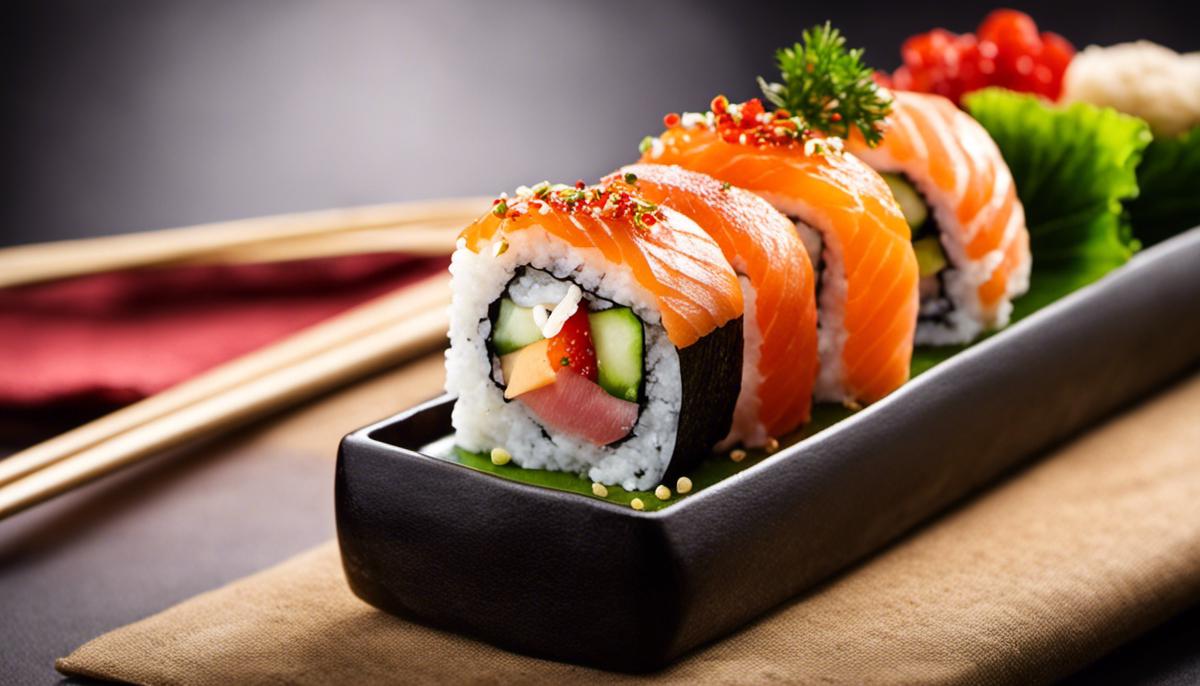
Health Benefits and Influence of Sushi
When we look at Sushi’s health-promoting benefits, there are a variety of valuable nutritional aspects. Not only that, but sushi has also revolutionized and influenced eating habits on a global scale.
One of the notable health features of sushi is its high omega-3 content. Fish, especially bluefish such as mackerel, sardines and tuna, are rich in these essential fatty acids. Regular intake of omega-3 fatty acids is essential for heart health. They also contribute to healthy nervous systems and mental clarity.
Furthermore, the use of rice and seaweed in sushi supplement our diet with vitamins and minerals. Brown rice for sushi provides fiber and thus supports healthy digestive processes. Seaweed, or “nori” as it is called in Japan, is full of iodine, which is essential for regulated thyroid function.
In terms of the impact of sushi on our eating habits, it has led to a global interest in Japanese cuisine and food culture. The harmony of flavors, the aesthetics of the presentation, and the rituality of the sushi experience have catapulted it into the culinary mainstream.
Sushi transcends familiar eating habits and encourages the enjoyment of raw fish – something that is usually seen as taboo in many cultures. The fact that sushi is now widely available and appreciated shows how open the global community is to different flavors and food cultures.
The importance of sushi etiquette and the artistry of preparation have also produced an entire generation of sushi masters and enthusiasts who study and pass on this unique art form. This phenomenon has contributed to cross-border dissemination and respect for Japanese food culture.
Finally, sushi highlights the appreciation for minimalism and the quality of ingredients, which has influenced the global idea of good food. Sushi teaches us that sometimes less is more and that the authenticity of taste takes precedence over over-the-top presentations.
Overall, sushi is much more than just a particularly excellent dish. It combines health promotion, food culture and aesthetics, influencing our approach and appreciation of food.
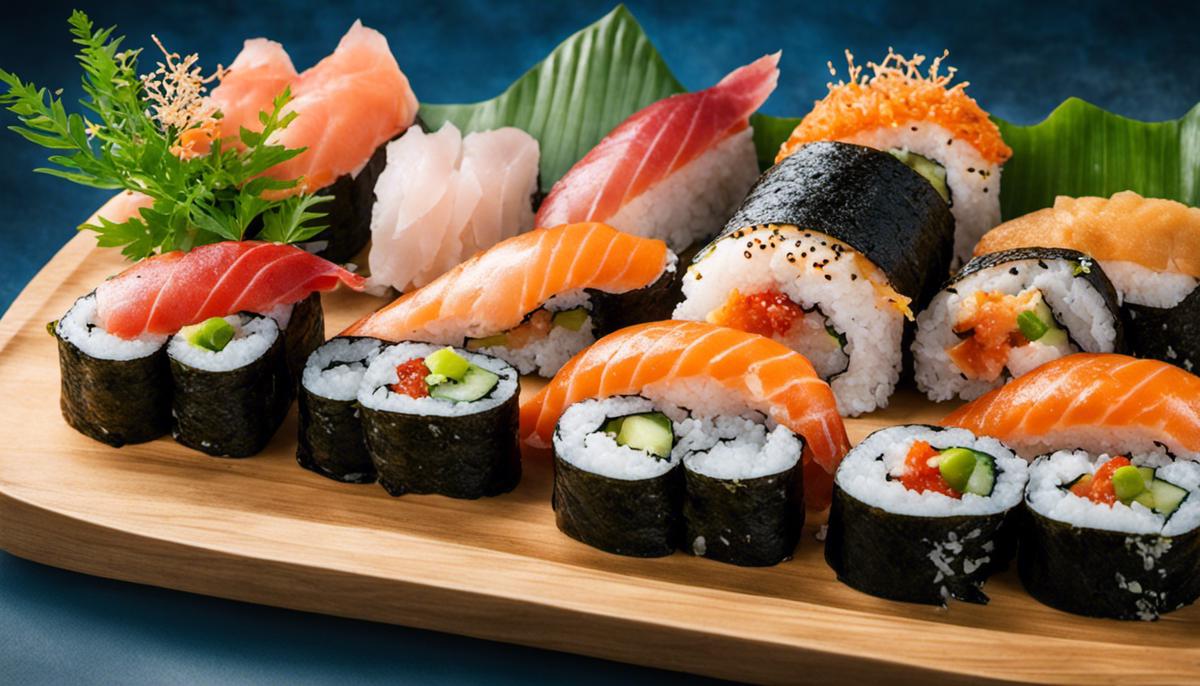
Sushi in the Global Culinary Scene
In terms of influence and presence, sushi has definitely left its mark on the international gastronomy scene. This delicate, handmade Japanese dish has become a beloved delicacy around the globe and synonymous with excellence in the culinary world.
You can’t talk about the global popularity of sushi without mentioning its health benefits. Thanks to FDA guidelines, the modern consumer knows about the high omega-3 content and essential fatty acids in raw fish, which can lead to the promotion of heart health, healthy nervous systems, and mental clarity.
Another positive element of sushi is the role of rice and seaweed as a nutritional agent. Rice loaded with vitamins, minerals and fiber plays a big role in aiding digestion. The seaweed, rich in iodine, promotes thyroid function. Both elements consciously encourage the health-conscious decision to influence the international gastronomy scene.
The global interest in Japanese cuisine and food culture has undoubtedly influenced eating habits. The harmony of flavors, the aesthetics of the presentation, the rituality of the sushi experience; all of this creates an openness to different tastes and food cultures.
The international appreciation for minimalism and quality of ingredients has certainly propelled sushi to the forefront of the culinary world. The importance of sushi etiquette and preparation is shown far beyond Japan. Sushi masters and enthusiasts around the world emphasize respect for Japanese food culture and dedicate themselves to spreading it across borders.
So it’s clear that sushi is more than just a dish – it’s a vibrant representation of Japan’s sense of tradition, artful values, and extraordinary ability to tantalize the palate. It’s no wonder, then, that it has taken the international gastronomy scene by storm and continues to do so.
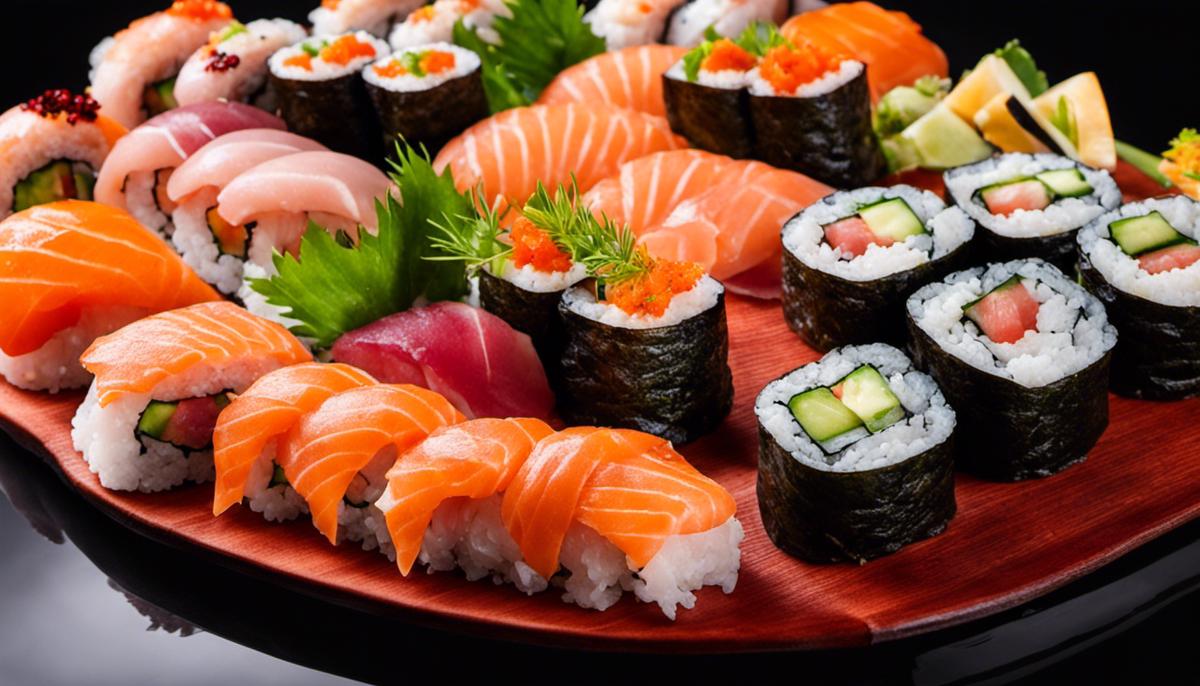
It seems that sushi, which once began as a simple method of preserving fish, has become a global phenomenon that convincingly captures and depicts the essence of Japanese culture. Its influence on the global culinary scene exemplifies the universal appeal of its artful presentation, health benefits, and profound symbolic meaning. Sushi is therefore not only part of Japanese culture, but also an ambassador for this culture in the world. However, understanding the importance of sushi in Japanese culture requires a deep examination of its history, aesthetics, social norms, and the perfection and attention to detail it aspires to.
